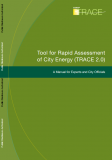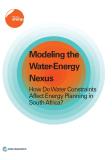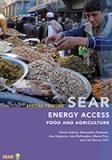Publications
The tradeoffs between energy and water have been gaining international attention in recent years as resource demand grows, climate change impacts manifest, and governments struggle to ensure reliable supply. About 663 million people still lack access to improved sources of drinking water, and 2.4 billion people remain without access to improved sanitation. Water insecurity affects every continent. Additionally, 1.1 billion people lack access to electricity. Water and energy resources are inextricably linked. Significant amounts of water are needed in almost all energy generation processes, including electricity generation and fossil fuel extraction and processing. Conversely, the water sector needs energy to extract, treat, and transport water. Energy and water are also both required to produce crops, including those used to generate energy through biofuels. This relationship is what is known as the water-energy nexus, and it exists within the larger water-energy-food nexus. The international community recognizes the magnitude of the tension between energy and water resources.
In 2014, the water and energy nexus was the subject of the World Water Development Report (WWDR), the UN’s World Water Day, and Stockholm International Water Institute’s World Water Week. These efforts helped catapult the nexus onto global policy agendas, and coordinate ongoing work to consolidate indicators and data in initiatives. As policies are implemented to ensure that affordable, reliable, and sustainable energy is available to all, it is critical to consider the surface water and groundwater impacts that may result from them. There will be tradeoffs in all cases, but in analyzing and quantifying the impacts, the international community can ensure long-lived and sustainable successes.
Rodriguez, Diego Juan; Delgado, Anna; Sohns, Antonia Averill. 2017. Energy Access and the Energy-Water Nexus. Washington, D.C.: World Bank Group. http://documents.worldbank.org/curated/en/125951494930176246/Energy-access-and-the-energy-water-nexus



